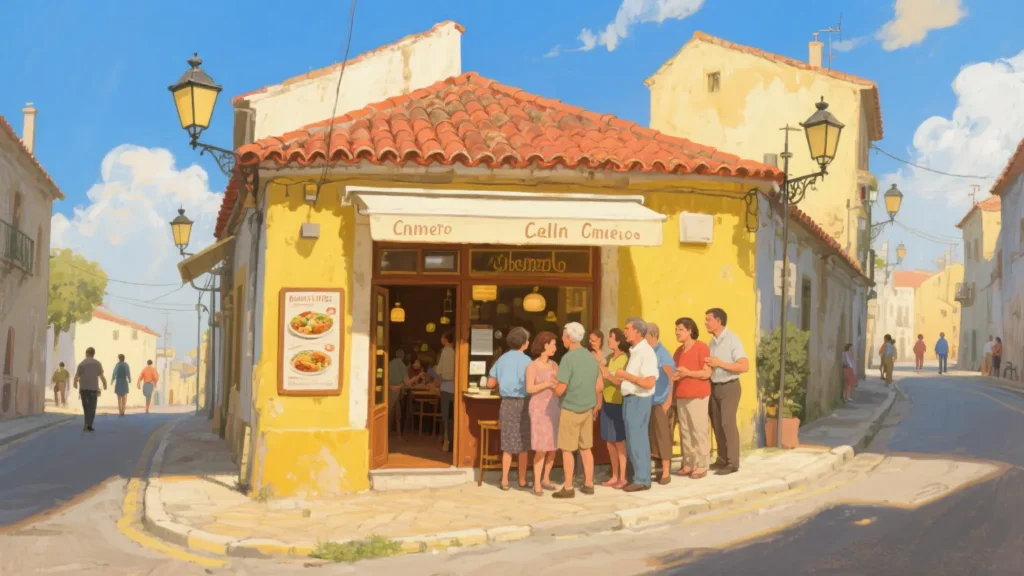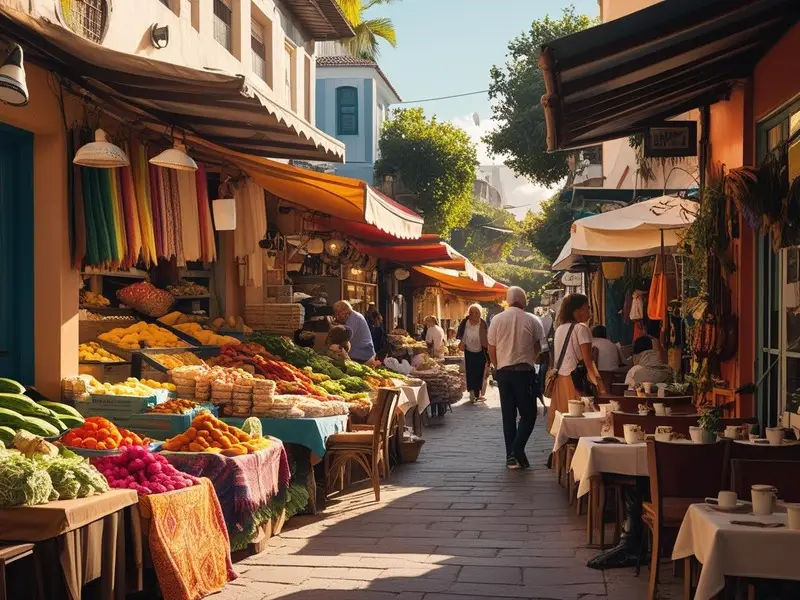Visiting the world’s most famous places can be an unforgettable and life-enriching experience wrapped in authentic culture, breathtaking landmarks, and delightful dishes. However, in many locations that are very popular, people find themselves paying a “hidden” fee known as tourist traps. These are expensive, overcrowded, and often fake experiences designed to trap travellers through trickery.
Tourist traps could be anybody stopping outside the Eiffel Tower to purchase some poor quality gift from the shops located there or having to pay three times the price for a meal that is actually awful at a restaurant. These could not only leave you with little money in your pocket but also feeling a bit frustrated. The good news is, it is still possible to have memorable travel experiences in top destinations without falling into the most typical travel traps. They are enough if you have the knowledge and plan the journey properly.
This guide explains what tourist traps are, how to recognize them, and most importantly, how to avoid them—thus, helping you to be a smart traveler, an economic wander, and a seeker of authenticity at the same time.

A Boon Or Bane of Tourism – What Are Tourist Traps?
A tourist trap is actually a place, service, or activity that is heavily advertised to travelers but doesn’t give them value for their money. Mostly, they are found near busy destinations, airports, cruise ports, and major tourist hubs. These traps are normally very expensive, occupied, and tend to lack the real cultural essence.
They typically exhibit the following features:
- Inflated prices as compared to the local ones
- Exemplifying the things in a commercial way and offering shallow experiences
- Inferior articles or eatables
- Sellers or promoters that can’t be easily chased away
- Favoring of ease of means instead of being genuine
Tourist traps can also be the false “local traditions,” fixed performances, or restaurants that offer menus in ten different languages with photos of all the dishes. Although some tourists go to such spots for reasons of convenience or curiosity, many of them feel sorry about the situation.
Research First Be Happy Later!
The most efficient way to get away from dealing with pitfalls in the world of tourism is to know your location inside out by conducting research before your trip. Nowadays, we have the Internet, which is a great tool to use for getting reliable information before you travel.
You can start by reading travelogs, visiting Reddit page, and the pieces of advice from travelers given on TripAdvisor’s website. It is wise to use authentic online posts rather than just going to official tourism websites, which sometimes are not entirely honest about the tourist attractions.
Another good way could be using Google Maps and read what people are commenting about the place. The star rating itself is not enough. Check what the people have experienced and that what they are saying is true and then judge if you are going to that place or not.
Watching videos on YouTube and TikTok, anyone can find those who are talking about how to avoid scammers, where the tourist traps are, or what alternative routes to take. The travel vlogs and reels contain such information.
Eat Where the Locals Eat
Among all the pleasure during tourism, food plays an essential role; also, it is the area where tourist hotspots are found. In addition to that, restaurants with a reputation for serving fairly priced local food in tourist areas often offer meals that are just ordinary or diluted versions of the dishes.
As a local would do, depart from ordinary tourist paths. After walking for some blocks, in any direction, you can be sure to land at places with the same or tastier food but at a friendlier cost. Pay attention to places where the line of people waiting for a table is long enough and full of locals; those are the places to be. The lack of a localized menu and the presence of pictures of every dish are hints that the restaurant is targeting tourists only.
One way to get some feedback from the locals is to ask them where they would eat. The best-kept secrets in a city can be provided by hotel staff, Airbnb hosts or even the locals, on the street. Another way is to use apps that allow you to filter the best local restaurants based on ratings like Google Maps, Yelp, or TheFork.
Be careful not to choose to eat immediately next to landmarks such as the Colosseum, Eiffel Tower, or Times Square. The prices are greatly exaggerated and the food quality is quite low because it is the view that the restaurants will be selling.
Explore Beyond the Main Tourist Zones
A lot of tourists get stuck in the overly touristic main district and they do not get to feel the spirit of a real city. Visitors see famous locations like the Louvre and Buckingham Palace, and they enjoy it but they are a very small part of the itinerary.
Think about being in the neighborhoods that the original city dwellers do. Indigenous people’s residential and business quarters are often cozy little cafés, markets, and at a quieter pace. For instance, in Paris, stay around and visit the 11th arrondissement rather than the Champs-Élysées area. In Rome, test the quieter streets and eateries of Testaccio instead of just staying with the Colosseum area.
Participate in a tour that is led by a local guide and not a standard, headset-based group tour. There are many non-traditional tours that offer the exploration of the local art scene, culinary traditions, or history in more remote areas.
Take a bus, ride a bicycle, or simply walk. What makes these slow means of transportation special is that only by this method you can find unforeseen treasures and little stores that you wouldn’t be able to see if you were going by bus as part of a structured tour.

Avoid Overpaying for Attractions and “Exclusive” Deals
Avoid tourist-oriented places where they sell exclusive experiences, fast-track opportunities, and fast-pass offers at exorbitant prices. If you see ads for “VIP access,” “skip-the-line” offers, and “once-in-a-lifetime” packages, especially heard from street vendors or third-party sellers, be very wary.
Never fail to check online for any tickets from the actual place of your intended visit. Most of the famous sights, such as the Vatican Museums, and also the Statue of Liberty, offer online services with the added facility of purchasing a combined ticket or by booking your entry for a specific time slot.
If you decide not to pay a fortune for a gondola ride in Venice, an alternative can be looking at the less crowded canals or making use of a traghetto for a fraction of the cost. Tourists visiting Bangkok should avoid the expensive excursions by boat and not fail to use the public ferry service that operates on the Chao Phraya River.
Moreover, you can avail yourself of city passes that not only give you access to public transportation but also enable you to visit many places of interest in the city. Such passes can be beneficial when you are visiting a number of places, but also do some calculations first, and then opt for them if they turn out to be the best value option.
Learn the Local Etiquette and Language
Being as unobtrusive as you possibly can is a means of losing the label of potential victim in the area of dishonest maneuvers or the one paying excessively high rates. In all honesty, it is not so much about being able to speak the local language as it is about knowing the words like “excuse me,” “please,” and the magic words “thank you.”
- Empty streets, but friendly locals wave enthusiastically to you and just before gratifyingly taking your wallet out as a gesture of goodwill the big boys are strong and earnestly stop their accompanying parts not to do this.
Your understanding of local behavior can even prevent you from being an easy victim of illegal activity. For instance, empty streets do not necessarily mean it would be a good idea to march up to strangers and have a friendly chat with them. Empty streets do not mean that it is okay to march up to strangers and have a friendly chat with them before your wallet was taken as a gift of goodwill and the strong guys stopped the other individuals from going forward, not to do this, it was a joke.
If the deal is too good to be true, remember that it probably is. Be careful with:
- Taking a ride from an unmetered taxi or getting into one with a driver who wants to get somewhere “special”
- No less insistent are street artists who demand money from you after you take the photo with them.
- There are exchange booths that are located in major tourist streets and have pretty high exchange fees.
When you do feel that a vendor or a situation is not safe or good for you, you should simply leave that place. There is no need for you to buy anything or decide on an activity immediately if it’s not the right time for you.
Conclusion: Travel Smart, Travel Authentic
Avoiding tourist traps doesn’t mean you have to erase every well-known attraction from your travel list. It’s all about your mindset on the road, your interaction with your surroundings, and your motive of being open to the original culture of a certain location.
If you equip yourself with enough information, try out less known places, and communicate with local people, you will eventually be able to spend less and earn the most amazing and awesome experiences, rather than getting upset over increased prices and a bad visit-at-the-end spot.
The next time you find yourself at a marketplace teeming with people or being given a flyer for a “not-to-be-missed” event, the best advice for you is to stop by for a few minutes and ask yourself: Do I really want this experience?

That’s because the best journeys are not the ones where you complete your checklist of tourists’ favorite spots but the ones that take you by the hand and show you the world through the eyes of a native.